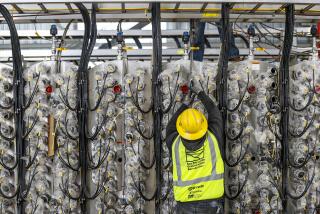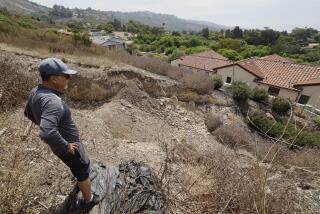Secession and Sewage
San Fernando Valley secessionists have made sewer rates a rallying cry for forming a separate city. Yet even if one believes that Valley residents are getting a raw deal on sewage--which is not exactly the case--secession advocates offer no concrete plan for how a Valley city would lower rates. A story in The Times Jan. 23 pointed out that secession could well give Valley residents less control over how rates are set by making them customers of the city-owned sewer utility rather than the co-owners they are now.
Dividing the city’s labyrinthine sewer system is not as simple as giving buildings and other hard assets to a new Valley government as secessionists have suggested.
The Donald C. Tillman Water Reclamation Plant, in Van Nuys, can’t be easily severed from the rest of the system. The 6,500-mile-long network collects 458 million gallons of liquid waste a day from Los Angeles and numerous neighbors and sends it to the Hyperion plant and eventually Santa Monica Bay.
The Tillman plant provides only initial treatment to waste that is eventually piped to Hyperion, does not treat any of the sewage from the southeastern third of the Valley and, by itself, has no access to Santa Monica Bay. Even if converted to an all-purpose plant--a major and costly undertaking--it would have to dump the treated waste into the adjacent Los Angeles River, a situation that would be governed by much tougher rules than those for dumping into the ocean.
An alternative to dividing or duplicating the system would be to set up a joint powers authority, but Los Angeles is under no obligation to agree to such an arrangement. The remaining option is for a Valley city to contract with Los Angeles to provide services. While secession advocates argue that even a customer can negotiate better rates, in this case the customer wouldn’t have any other place to turn to if it didn’t like the rates offered.
Compare this with concessions the Valley has already won as part of Los Angeles.
Sewage rates are based on water usage because there is no easy way to measure sewage outflow from homes. But homeowners in the suburban Valley have long argued that their higher water use shouldn’t translate into higher sewage bills because much of the water goes to irrigate lawns and fill swimming pools and does not wind up in the sewer. (Never mind that swimming pools, because of chemicals used to treat the water, should arguably be emptied into sewer drains, not storm drains.)
Three years ago, City Council members representing the Valley successfully pushed to change the rate structure so that rates would be based on use in the winters, when swimming pools are generally empty and less water is needed to irrigate. If the Valley had not been part of the city that owns the utility, it would have had no representatives to make its case.
Could the sewage system’s administration be streamlined, service made more efficient, rates dropped? Possibly--not just for the Valley but for residents citywide. A City Council-ordered audit is looking at the city’s waste water system now. It’s good to keep pressure on city bureaucracies, but at some point secessionists will have to face the truth about how little good would come from splitting up.
More to Read
Sign up for Essential California
The most important California stories and recommendations in your inbox every morning.
You may occasionally receive promotional content from the Los Angeles Times.










